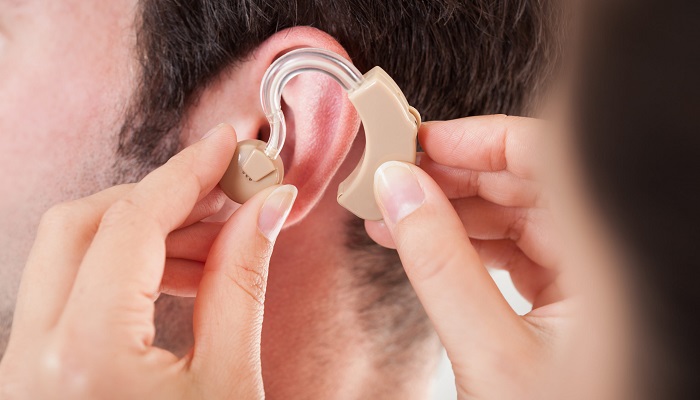The field of hearing technology in medicine has witnessed remarkable advancements. With the rapid development of digital health innovations, there is a growing curiosity about the future of traditional hearing aids and whether they will become obsolete.
As digital health innovators explore alternative options for auditory care beyond traditional in-school tests and hearing aids, audiologists are steadfastly defending the efficacy of these tried-and-true tools. While new audio tools are emerging, experts assert that nothing can replace the essential role of hearing aids. In this blog, we will delve into the exciting world of hearing technology, explore the latest breakthroughs, and discuss the potential for obsolescence in this ever-evolving field.
The Evolution of Hearing Technology:
To understand the future of hearing technology, we must first appreciate its remarkable evolution. Traditional hearing aids have come a long way from their humble beginnings, embracing digitalization and miniaturization. These devices have transformed the lives of millions, providing enhanced sound quality and improved user experience. However, recent advancements have introduced a wide range of alternative options, including hearables, implantable devices, and innovative sound processing algorithms.
The Rise of Digital Health Innovations:
Digital health innovations have revolutionized the healthcare landscape, and the field of auditory care is no exception. Mobile applications, wearable devices, and telehealth solutions have opened new avenues for auditory assessment, monitoring, and rehabilitation. These technologies offer the promise of personalized and accessible care, empowering individuals to take control of their hearing health. You can get free or low-priced hearing aids with the help of healthcare insurance policies. But does this mean that traditional hearing aids will be rendered obsolete?
The Limitations of New Technologies:
While new technologies have undeniably expanded the possibilities for auditory care, they are not without their limitations. Alternative options like hearables and sound amplification devices may provide convenience and discreteness but may fall short in addressing complex hearing impairments. Furthermore, these innovations often lack the customization and precision that traditional hearing aids offer. Audiologists argue that the extensive research, expertise, and fitting process involved in prescribing hearing aids cannot be easily replicated by off-the-shelf devices.
The Indispensable Role of Hearing Aids:
Audiologists and hearing healthcare professionals passionately defend the indispensable role of hearing aids. These devices have a proven track record in effectively addressing various types and degrees of hearing loss. They are designed to be tailored to the unique needs of each individual, providing optimal amplification and sound processing. Moreover, hearing aids offer advanced features like noise reduction, directional microphones, and connectivity options that enhance communication and improve quality of life.
Advancements in Traditional Hearing Aids:
Rather than becoming obsolete, traditional hearing aids are continuously evolving and incorporating cutting-edge technologies. Manufacturers are incorporating artificial intelligence algorithms, machine learning, and sensor technologies into their devices, allowing for adaptive and intelligent sound processing. Furthermore, significant progress has been made in improving battery life, reducing size, and enhancing user comfort. These advancements ensure that hearing aids remain a reliable and effective solution for individuals with hearing loss.
The Synergy of New and Traditional Technologies:
Rather than viewing new technologies as a threat, many experts advocate for the synergy between traditional hearing aids and emerging innovations. The combination of telehealth solutions, smartphone apps, and wearable devices can complement the capabilities of hearing aids, enhancing the overall auditory care experience. For instance, remote programming and monitoring enable efficient adjustments and fine-tuning of hearing aids, ensuring optimal performance. Moreover, smartphone connectivity allows for seamless integration with various audio sources, promoting accessibility and convenience.
The Human Touch: The Role of Audiologists:
While technology continues to advance, one aspect that cannot be replaced is the expertise and guidance of audiologists. These professionals play a crucial role in diagnosing hearing loss, recommending appropriate interventions, and providing ongoing support. Audiologists have the knowledge and skills to navigate the complexities of auditory care, ensuring that individuals receive personalized and evidence-based solutions. The human touch in audiological care is irreplaceable, underscoring the continued relevance of hearing healthcare professionals.
Conclusion:
In conclusion, the future of hearing technology in medicine is a blend of innovation and tradition. While digital health advancements offer exciting possibilities, traditional hearing aids remain an essential and reliable solution for individuals with hearing loss. Rather than becoming obsolete, traditional hearing aids are evolving alongside emerging technologies, incorporating advanced features and intelligent sound processing. The synergy between new and traditional technologies, combined with the expertise of audiologists, ensures that the future of auditory care is bright and promising.


















